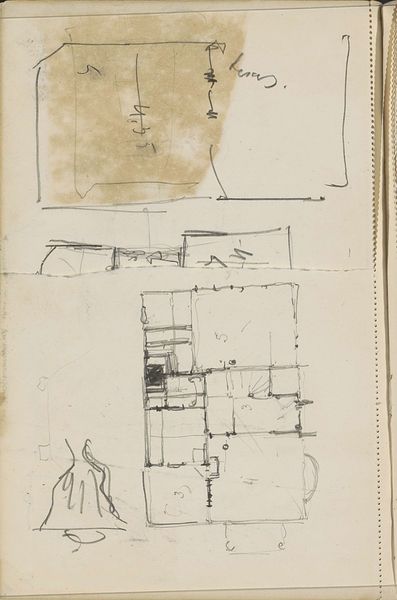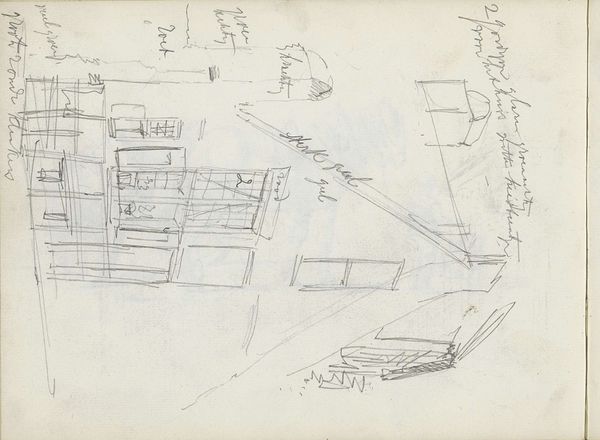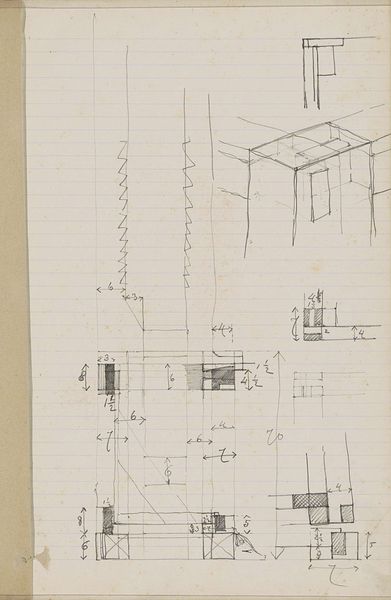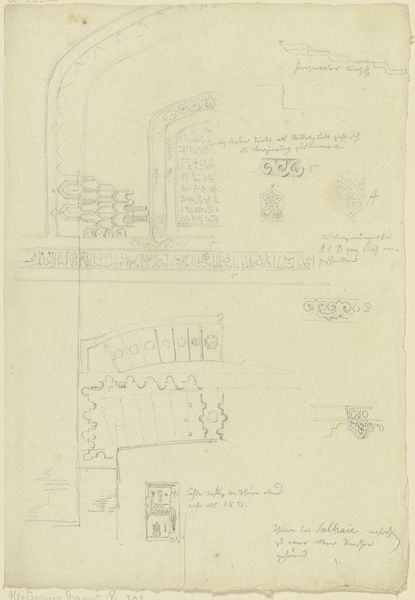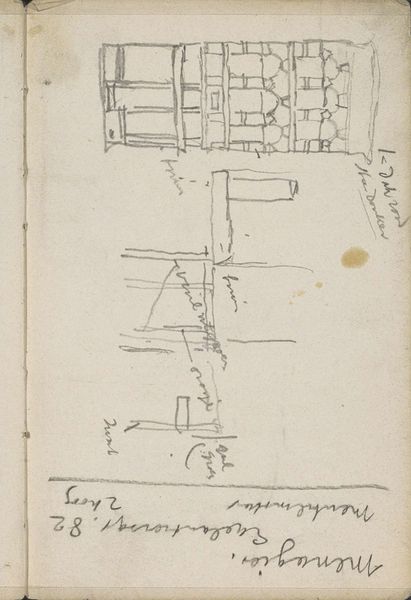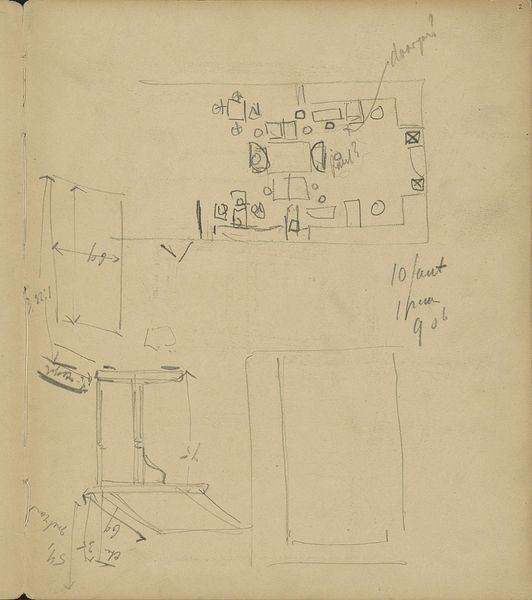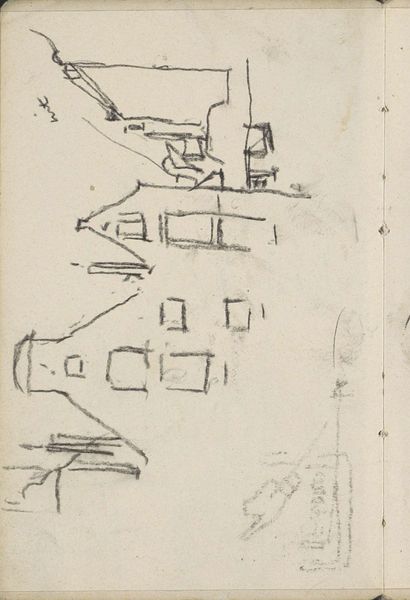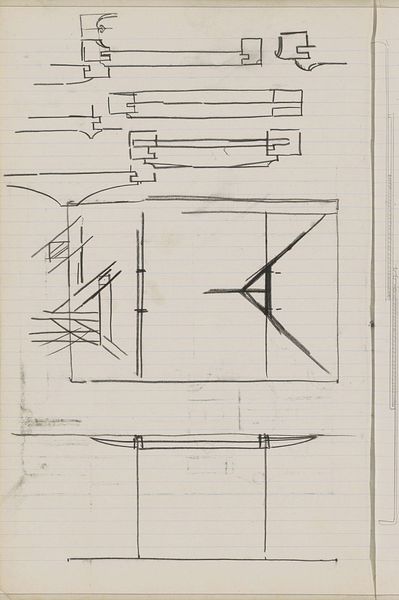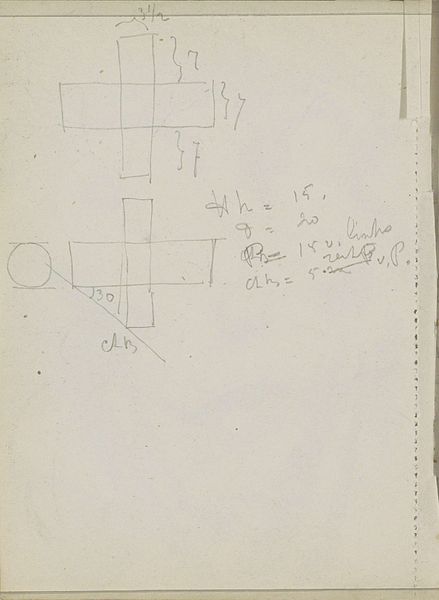
drawing, pencil, architecture
#
architectural sketch
#
drawing
#
aged paper
#
hand written
#
sketched
#
sketch book
#
hand drawn type
#
personal sketchbook
#
pencil
#
technical sketch
#
architecture drawing
#
architecture
#
initial sketch
Copyright: Rijks Museum: Open Domain
Editor: Here we have "Metseltechnieken voor muren," or "Masonry Techniques for Walls," a drawing in pencil by Carel Adolph Lion Cachet from around 1895. It’s a page filled with architectural sketches and handwritten notes. I'm struck by how this seemingly simple sketch reveals the foundations—literally—of so much built environment. What strikes you about this work? Curator: What fascinates me is how this seemingly straightforward technical drawing opens up a dialogue about labor, craft, and the very construction of our societal structures. This isn't just about bricks and mortar; it's a glimpse into the skills and knowledge of the workers, often marginalized and erased, who physically built the world around us. Editor: That’s a perspective I hadn’t considered. Can you elaborate? Curator: Certainly. Consider the historical context. Late 19th-century Netherlands was experiencing significant urbanization and industrialization. This sketch isn't just about aesthetic considerations; it reflects the rise of a working class whose labor was essential to this expansion, yet often exploited and unseen. The drawing, in its technical detail, indirectly acknowledges their crucial contribution, even as their names and stories remain largely unwritten. Editor: So, you see this drawing as almost a document of social history? Curator: Precisely! It invites us to question whose stories are told and whose are omitted in the grand narratives of art and architecture. How might we re-center these untold narratives and acknowledge the agency of the builders, the bricklayers, whose skills are meticulously documented here? What does it mean to you to see something hand-drawn at that period? Editor: Thinking about it that way definitely changes how I view the drawing. It’s a reminder that art isn't just about individual genius; it's connected to broader social and economic realities. It feels much more resonant now. Curator: Absolutely. It encourages us to look beyond the surface and delve into the complex layers of history, identity, and power that are embedded in even the most seemingly mundane objects. We are the ground upon which those walls stand, what happens with walls determines the society around us.
Comments
No comments
Be the first to comment and join the conversation on the ultimate creative platform.
